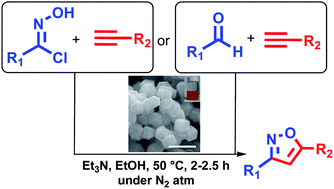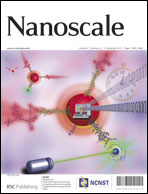Investigation of facet effects on the catalytic activity of Cu2O nanocrystals for efficient regioselective synthesis of 3,5-disubstituted isoxazoles†
Abstract
Cubic, octahedral, and rhombic dodecahedral Cu2O nanocrystals bound by respectively {100}, {111}, and {110} facets were successfully employed to catalyze the [3 + 2] cycloaddition reaction for the regioselective synthesis of 3,5-disubstituted isoxazoles. Surfactant-free nanocrystals having the same total surface area were used for the catalysis. Strongly facet-dependent organocatalytic activity has been observed. Rhombic dodecahedra with fully exposed surface copper atoms on the (110) planes are the most efficient catalysts, followed by octahedra and the least active nanocubes. The particles are also recyclable catalysts. Cu2O rhombic dodecahedra were also used for the syntheses of 3,5-disubstituted isoxazoles from a wide variety of aromatic imidoyl chlorides and terminal alkynes in ethanol at 50 °C with excellent yields. Furthermore, a one-pot multi-component synthetic approach was demonstrated to form isoxazoles directly from readily available aldehyde precursors. This work clearly shows that precise facet engineering of Cu2O crystals can lead to significantly improved organocatalytic efficiency.


 Please wait while we load your content...
Please wait while we load your content...